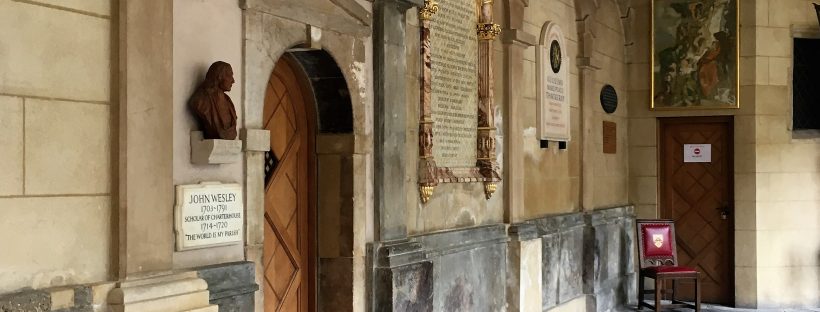As someone who is always out and about in London, the chance to visit somewhere for the first time is a real treat. Why have I not been there before? Well, despite being on this site since 1348 this is the first time the public has been allowed inside Charterhouse.
Opening up after so many closed centuries was a major event so who better to do the honours than Her Majesty The Queen, as is proudly proclaimed on this stone:
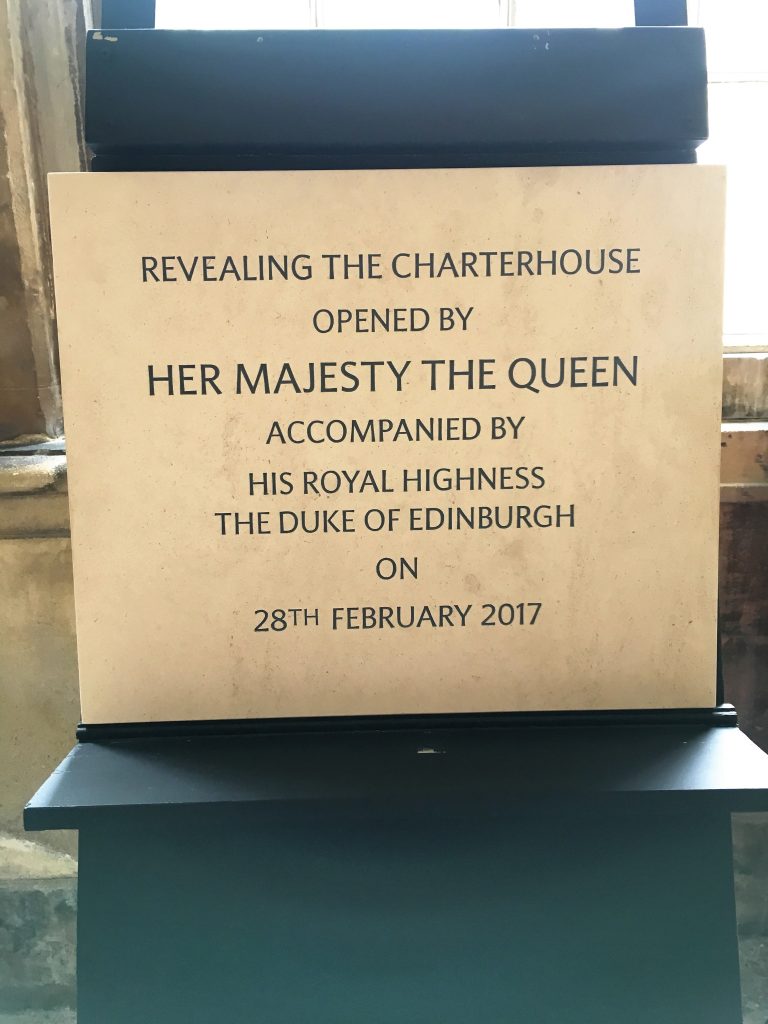
The Charterhouse began life as a burial ground for plague victims in 1348 when the Black Death decimated the population by about 50%, a staggering thought. In 1371 a Carthusian monastery was founded on this site and this is when the name Charterhouse is first used. Fast forward through to Henry Vlll who dissolved the monasteries and these buildings become a home for rich Tudor noblemen and a place to host royal events.
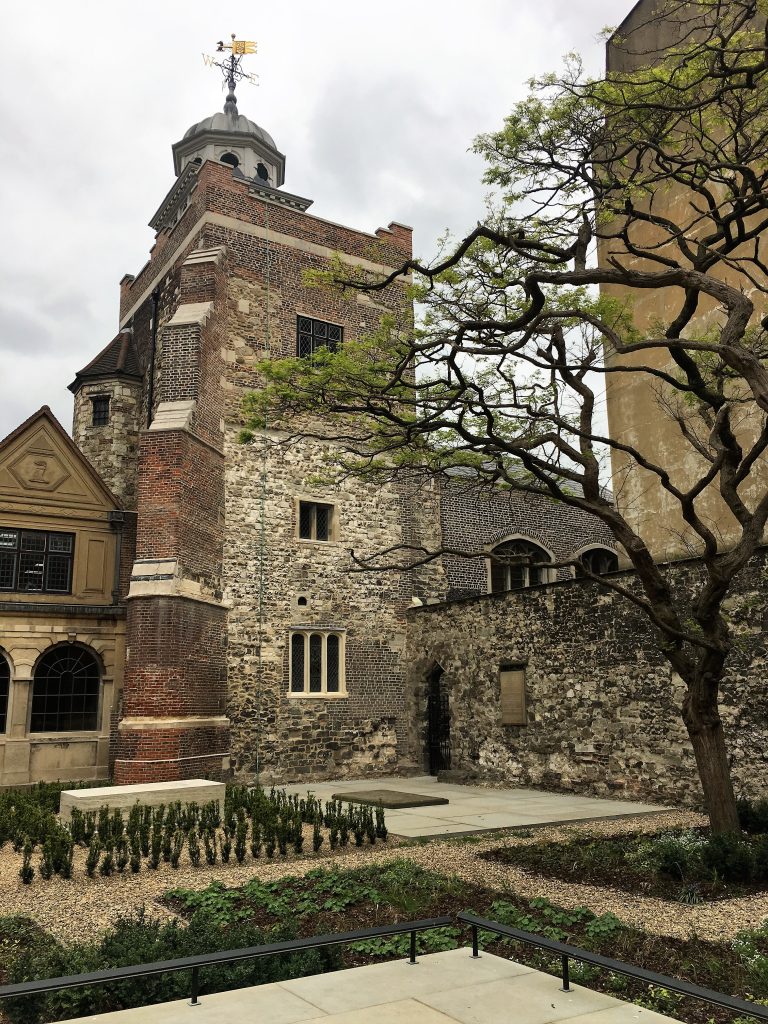
The gardens
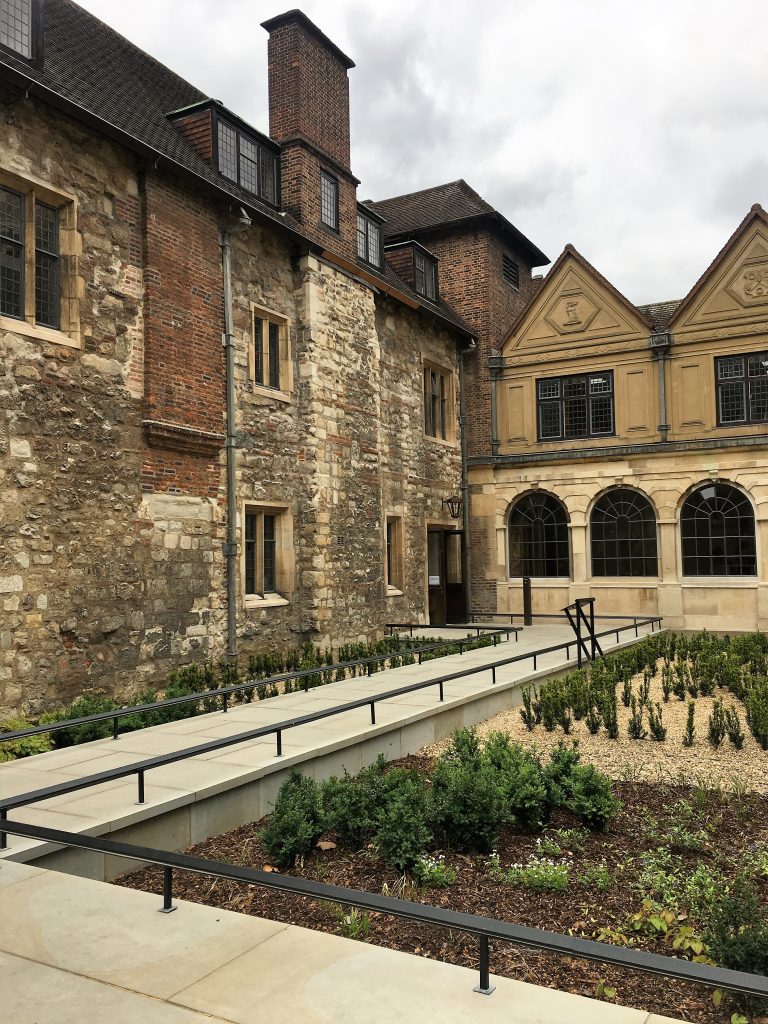
Arriving at Charterhouse
The year 1611 was when it all changed for Charterhouse as Thomas Sutton bought the existing house to set up a charity school and almshouses, an extraordinary act of philanthropy, guaranteed by his will which left his fortune to Charterhouse rather than his family, a source of great disappointment to them! To acknowledge his contribution, there is an enormous and elaborate memorial to him in the chapel and a closer look at the plaque describes him as a ‘gent’ which I rather liked.
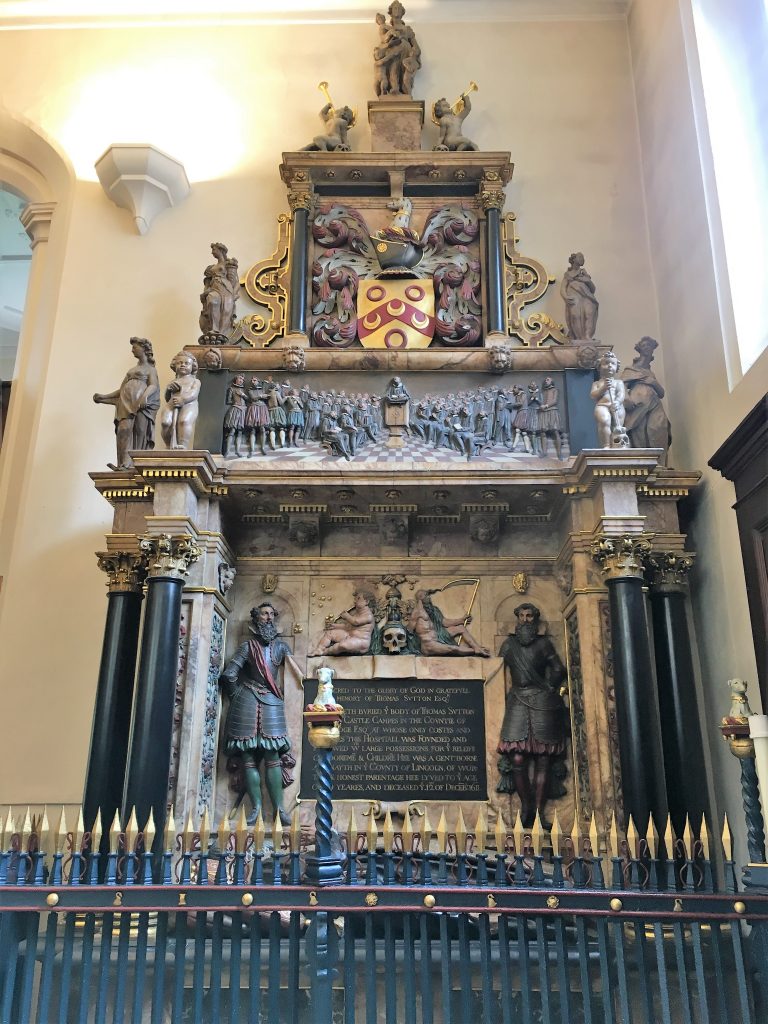
Thomas Sutton’s memorial
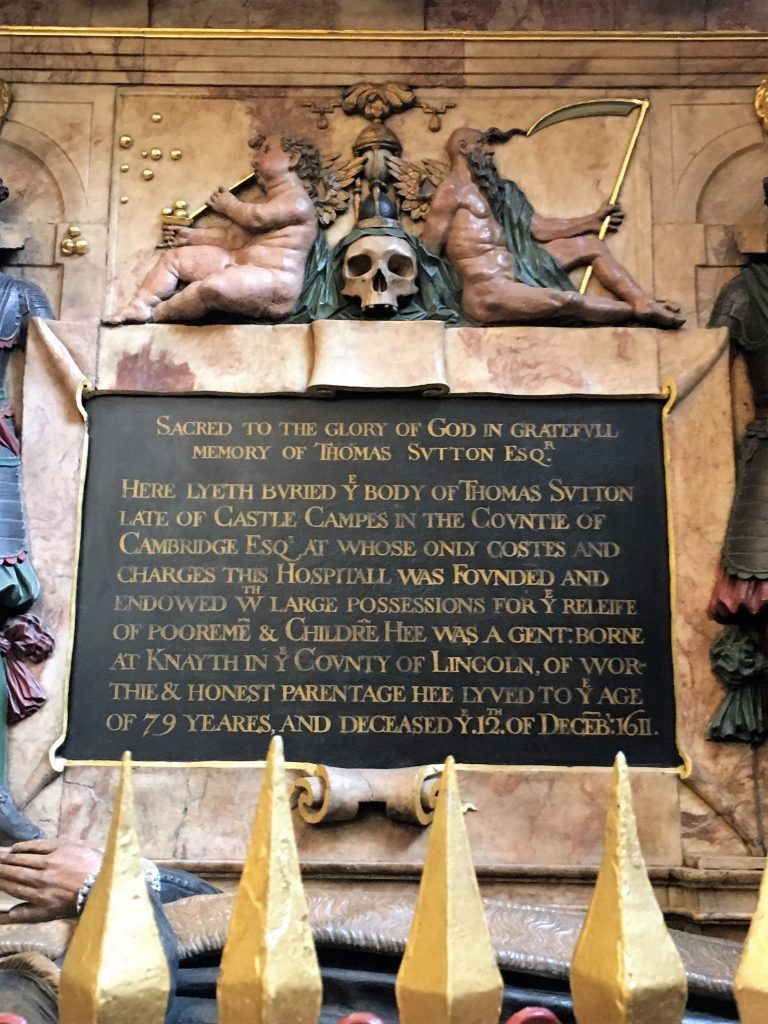
Plaque to a ‘gent’
Thomas’s school, Charterhouse became one of the most famous and sought-after schools in the country and had to move out to Surrey in 1872 to have more space and the Merchant Taylor School moved in. They subsequently moved out in 1933 for the same reasons. Sutton also bequeathed sufficient cash to provide for 80 Brothers who could be ‘either decrepit or old captaynes either at sea or at land, maimed or disabled soldiers, merchants fallen on hard times, those ruined by shipwreck of other calamity’. The Brothers remained after the school left and the community of Brothers are the current residents of Charterhouse, although they are not seafarers and the like but and soon some will even be women! Brothers need to be over 60 and in need of support for the rest of their lives.
Fully restored after a direct hit by an incendiary bomb in 1941 the decision was taken to open up the site for visitors to enjoy the chapel, to learn its history through the buildings, the plaques and a small museum. The Brothers offer tours or you can just wander around as the helpful volunteers will happily tell you the stories behind what you are seeing.
Entering through the modern reception and shop area, you are soon into the old building with an ancient feel thanks to the stone flagstones. Here you can see plaques to former pupils John Wesley, William Makepeace Thackeray and Robert Baden-Powell.
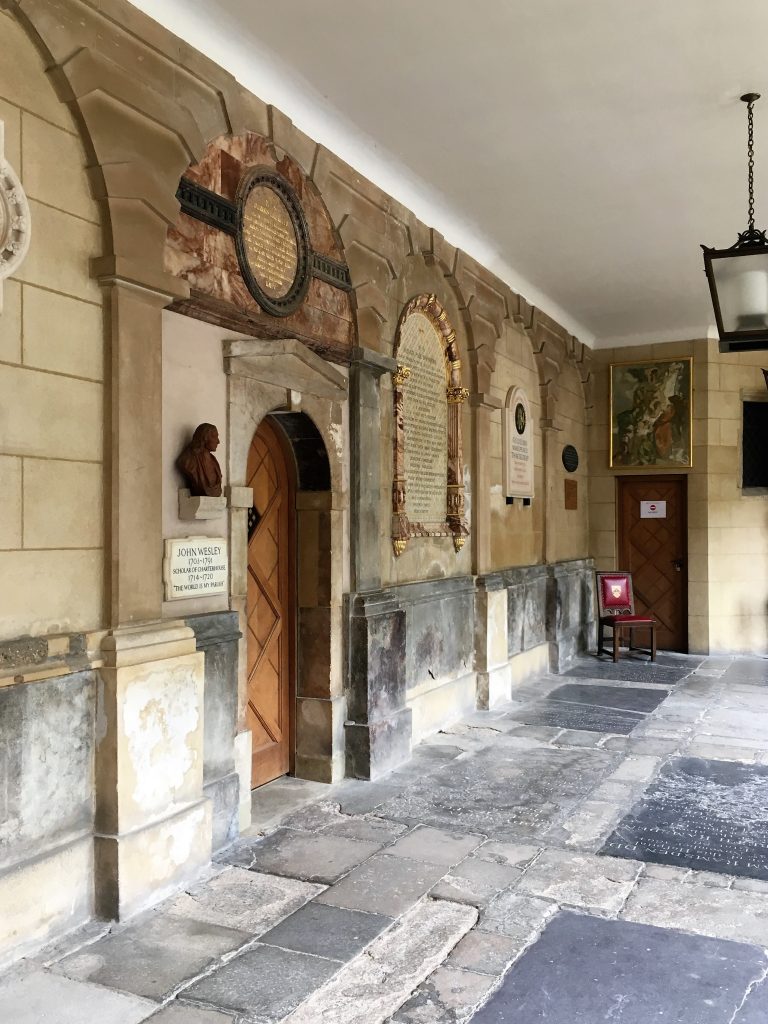
A memorial which caught my eye consisted of panels telling the story of each sad loss due to battle or developing a fever after injury, often in far-flung places, namely India and The Crimea. They were ‘charging the Seiks’ as part of the Light Dragoons, dying by the first shot fired in the siege of Delhi, or worn out by sickness and fatigue. The Havelock family paid for the memorial so figure largely but others are mentioned too, including one 17 year old who died in the mutiny of Allahabad.
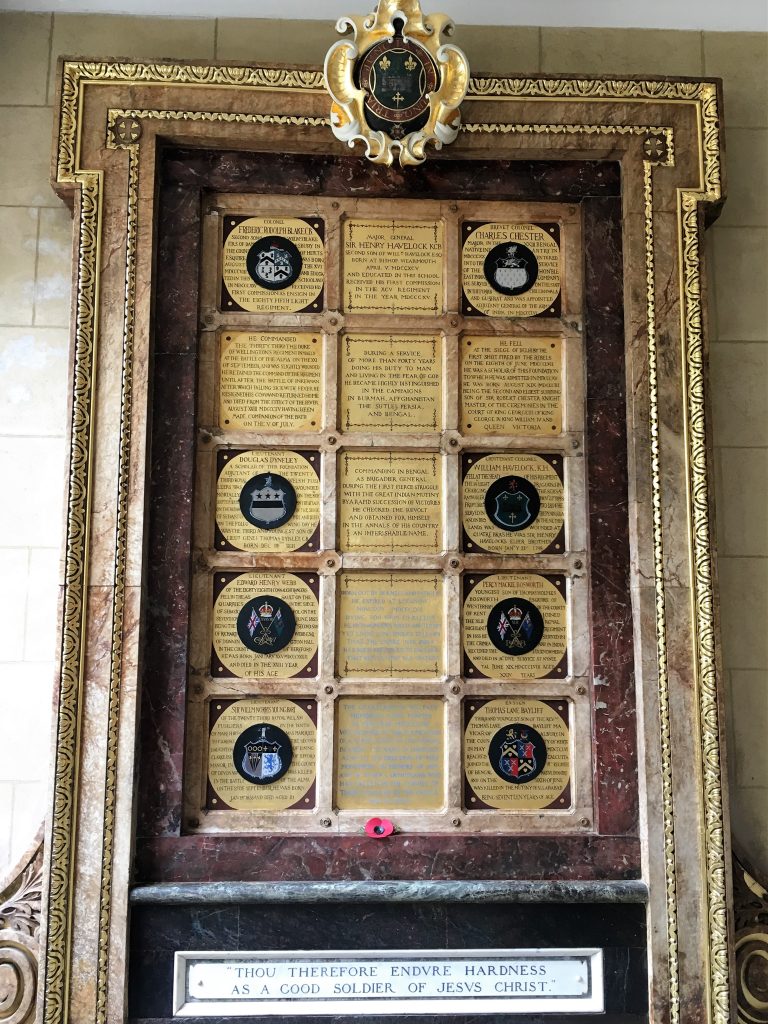
Memorial
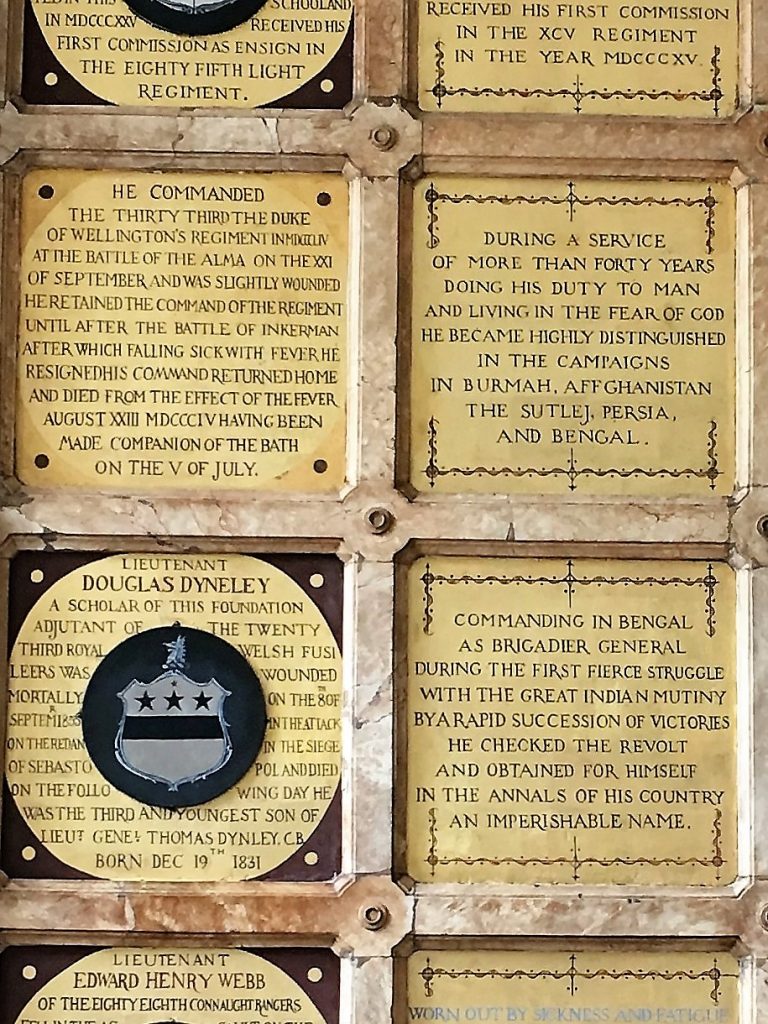
The chapel is the centrepiece of the visit, with grand stained glass windows, a rich altar screen, and a magnificent organ, dating from 1841, in a somewhat strange layout with sections seemingly bolted on due to the need to expand the chapel as time went on. The schoolboys had their own section, with the carefully positioned Schoolmaster’s seat so he could keep a stern eye on them.

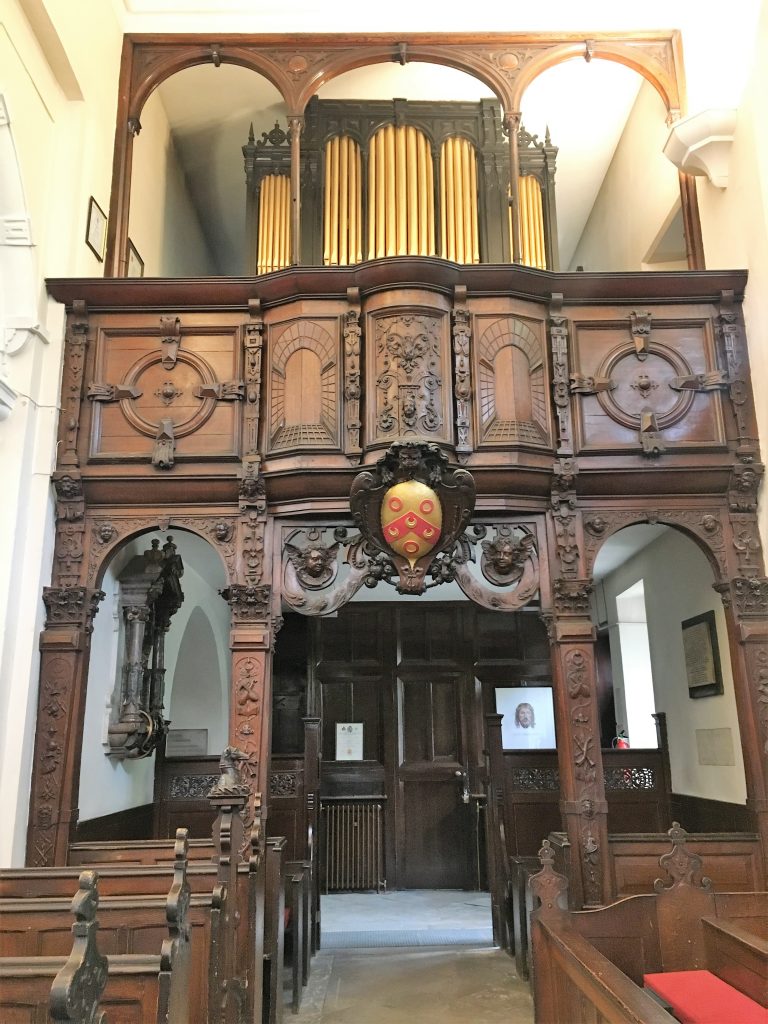
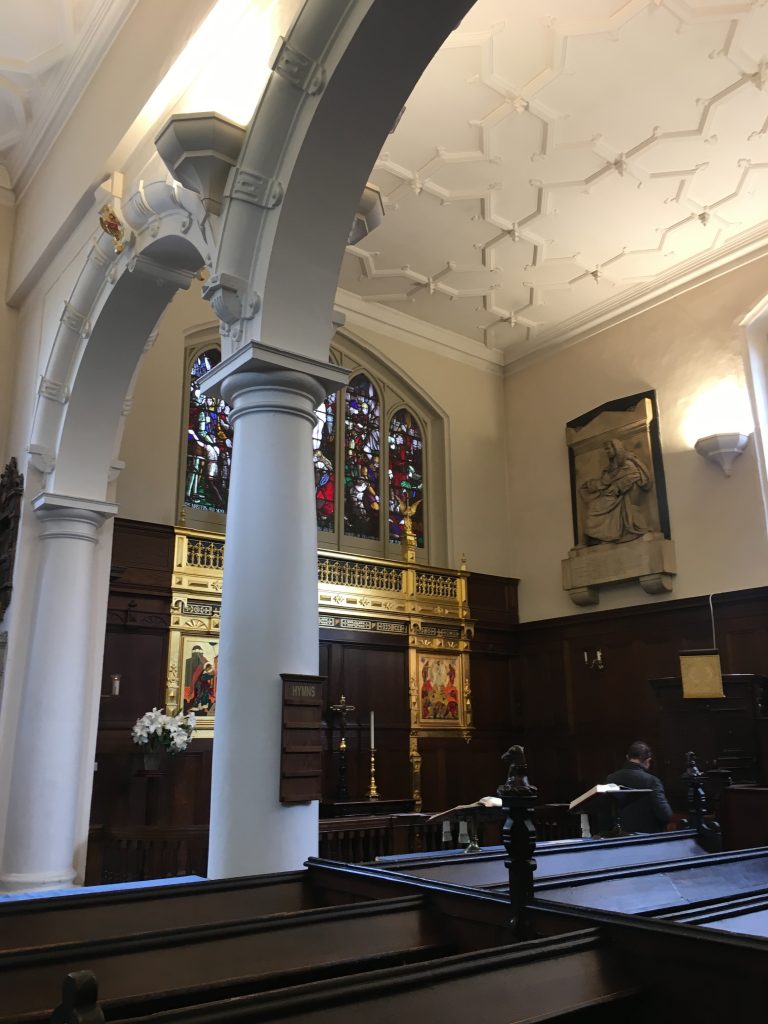
The museum houses items from the days of the Charterhouse school giving insights into the life of the boys and the frequent use of the cane to restore order for crimes including ‘outrageous cheek to monitors’! You can see what they ate and explore the everyday life at Charterhouse then and now. The museum invites you back in time to understand the centuries of history on this site and culminates in a skeleton of a young man who died of the Black Death, which was found during the recent Crossrail excavations, taking us back to the very start of Charterhouse’s story.
There is more to see if you take the full guided tour for which there is a charge but on this occasion we explored the free entry areas which offer plenty to enjoy. The restoration project which was completed in partnership with the Museum of London brings a new museum to London and a fascinating visit.
No museum visit is complete without a good cafe and Thackeray’s cafe next door is on my recommended list for tea, sandwiches and cakes.
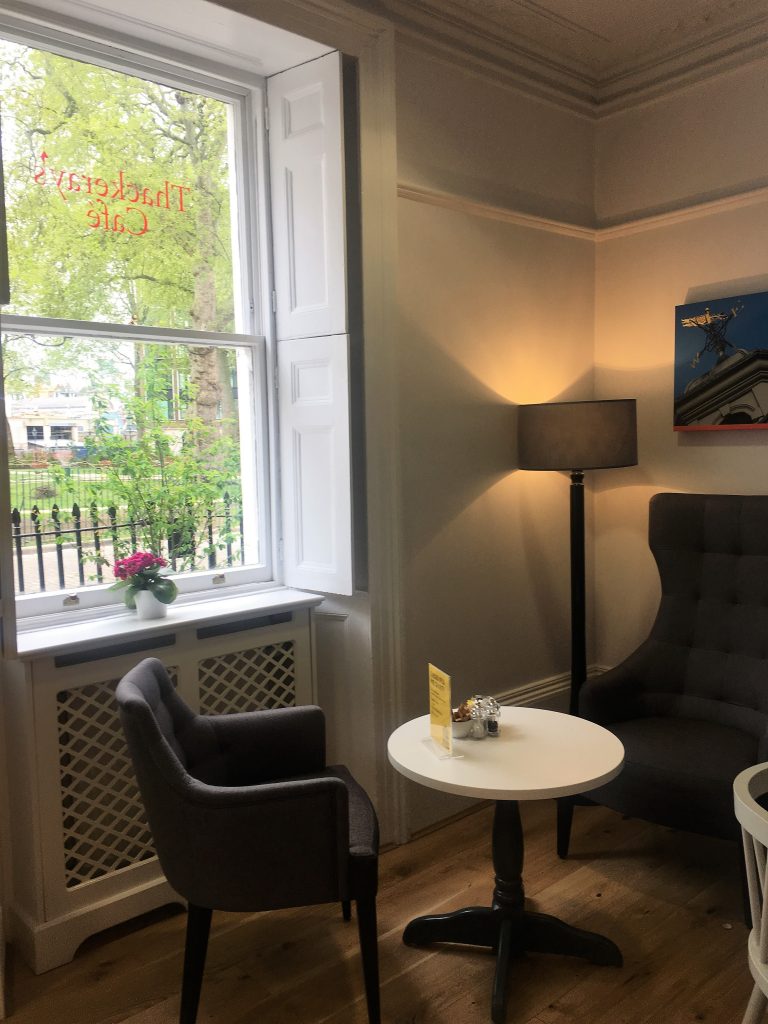
Thackeray’s cafe
Learn more about visiting Charterhouse here.
Full disclosure: I visited as a private individual. Entry is free.
